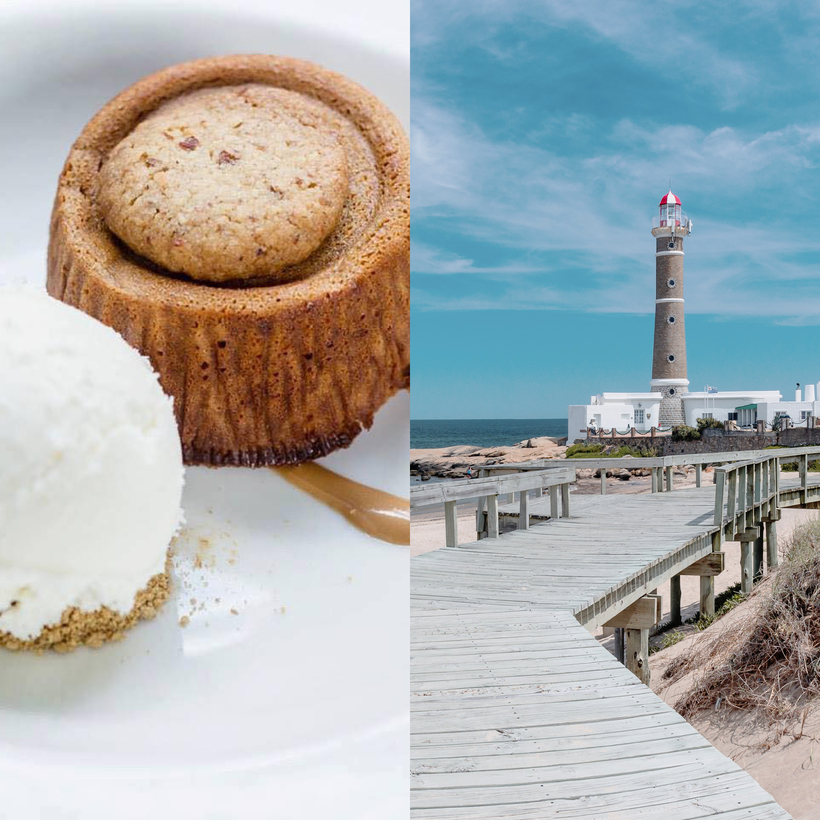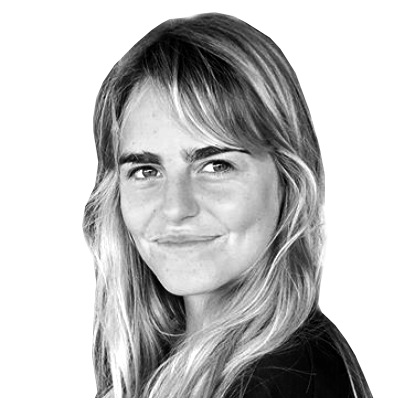Lunch at La Huella, in José Ignacio, Uruguay, never really changes. Patrons sit on the restaurant’s open decks, sipping glasses of white wine and looking out onto the Atlantic. Should they get chilly, they can wrap themselves in the traditional Uruguayan ponchos positioned on the back of each chair. The fashionable time for lunch is four P.M. Dinner is close to midnight, South American–style.

Today, La Huella is popular among polo players, models, and Argentinian TV stars. You might spot a member of the Twombly or Rattazzi family lounging out front, and it’s hard to picture a time when people in sarongs and Vilebrequins weren’t crowding in front of its entrance, vying for a table. But up until the 70s, José Ignacio was just a fishing village frequented by the San Carliños—residents of nearby San Carlos—who came on the weekends with rods and children in tow. There was a white, somber church, with its striking ocean backdrop, and a lighthouse.
In 1978, the opening of a new restaurant called La Posada del Mar put the tiny village on the world map. The popular Argentinean chef Francis Mallmann, then in his 20s, helmed the kitchen, and his dishes began to attract vacationers from flashy Punta del Este, a 40-minute drive west down the coast. Despite the political unrest, nearby Buenos Aires was still a rich city, running on the influx of wealth that reached its shores from Europe after World War II. “The Agnellis, the Sachses, and the Krupps were among the families who relocated to Argentina,” an Italian aristocrat tells me. “Punta del Este was their Hamptons. And we all started going to José Ignacio for lunch.”

“Old people remember those times,” one of La Huella’s founders, Martin Pittaluga, who first visited José Ignacio in 1983, tells me on the phone from Buenos Aires. “It was a cool place to be. People went horse riding for lazy sunsets after lunch, and I fell in love.”
Pittaluga is Uruguayan, but his parents were diplomats, and he has lived in Madrid, Brussels, Switzerland, and Canada. Before La Huella, most of his professional experience was in Paris, where he jumped from restaurant to restaurant, cleaning dishes and then, eventually, cooking. Pittaluga even had a brief stint aboard the Orient Express, living in Venice, Paris, Boulogne-sur-Mer, and Milan.
Pittaluga returned to Uruguay in the late 90s and opened a restaurant called Bajo el Alma, which has since been converted into his wife’s boutique, in José Ignacio. In 2000, he was approached by a group of Argentinians who wanted to open a beach club. In the summer of 2001, Pittaluga, Gustavo Barbero, and Guzmán Artagaveytia opened La Huella.

Initially, the menu consisted of typical Uruguayan fare—calamari, octopus, and fish on the grill. In the evenings, La Huella invited house-music D.J.’s, who blasted electronic tunes until sunrise. “The place was electric. Crowds came from all over the country,” Pittaluga says, adding, “There were two booms in José Ignacio. The one in the 90s because of Posada’s successor, Los Negros, and the one in the 2000s because of us.”
Today, the restaurant serves a little bit of everything—pizza, meat, fish, an onion tart inspired by Paris’s Balthazar, and a full cocktail menu. In 2004, La Huella became Uruguay’s first sushi restaurant. “Everything is locally grown,” Pittaluga says. “And we’ve always tried for 100 percent organic.”
The mishmash menu worked—since its opening, La Huella has been included in the South America section of the World’s 50 Best Restaurants list for nine years running, and its signature dessert, the dulce de leche volcano, has been replicated around the world.

The sleepy fishing village of José Ignacio has similarly evolved, despite nearby Argentina’s economic decline. Over the last 12 years, the American hospitality moguls Carrie and Alexander Vik have opened Bahia Vik and Playa Vik, five-star hotels, right next door to La Huella. Last year, South America’s first freestanding Skyspace installation by James Turrell, called Ta Khut—“the light,” in early Egyptian—opened inside the eight-bedroom, family-owned Posada Ayana hotel.
Giuseppe Cipriani (son of the Harry’s Bar founder), Paola Marzotto (daughter of the stylist Marta Marzotto), the Italian princess Bianca of Savoy, and the French prince Pierre d’Arenberg are regulars at spots around town. The Saudi Arabian fugitive financier Ghaith Pharaon’s son Laith is known to throw extravagant parties on the beach, where he lands on his helicopter. Houses during the high season, which usually spans December and January, can go for as much as $7,000 a night. (For much of the rest of the year, it rains often, and the coast is subject to cold Atlantic winds.)

Since La Huella’s opening, nightlife in José Ignacio has also grown. A bar called Ferona runs live-band sessions and regular-D.J. sets beginning in mid-December. Last New Year’s, tickets to a party at the Laguna Escondida clubhouse went for a minimum of $150 each.
Though it’s possible that the tourism Pittaluga helped set in motion will ruin José Ignacio, he is hopeful. “It’s not a place that’s appealing for mass tourism. The climate is hostile; it’s far away,” he says. “But still, it’s a constant battle. Sometimes [people] don’t understand that things are best left rough around the edges.
“That’s our charm.”
Elena Clavarino is the Senior Editor for AIR MAIL


